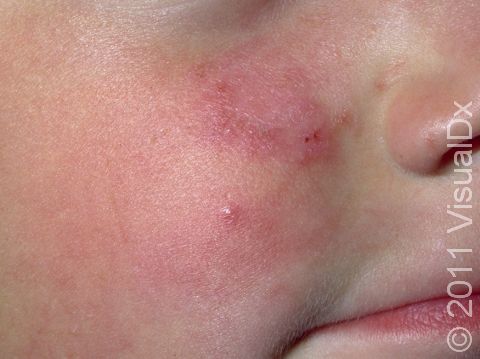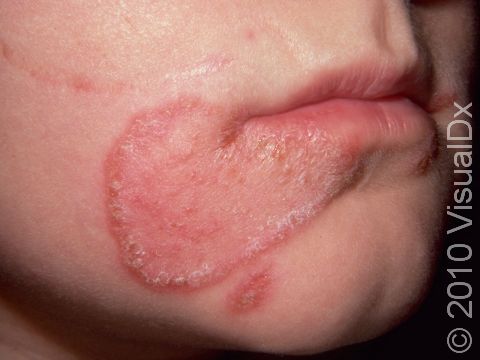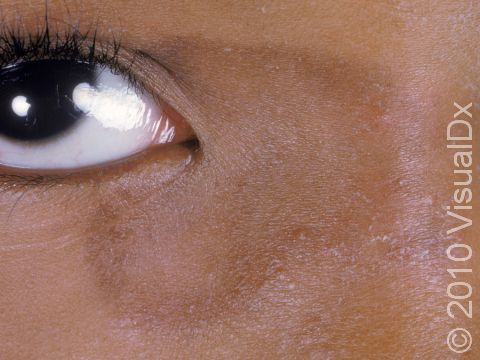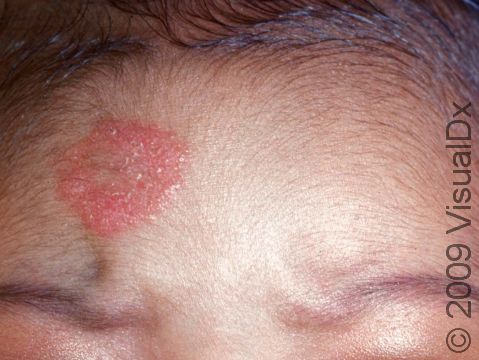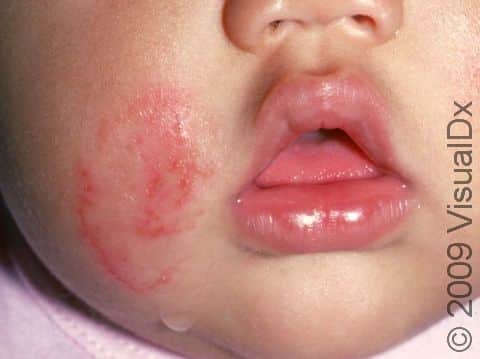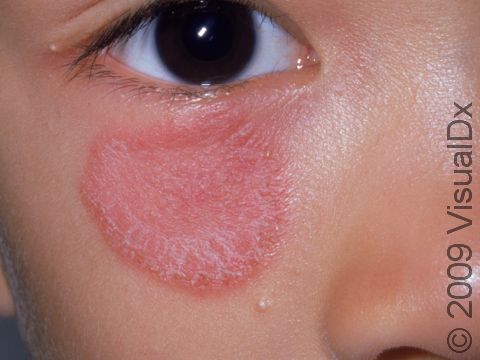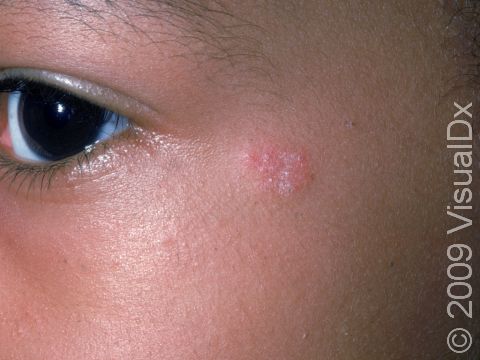Facial Ringworm (Tinea Faciei)
Tinea faciei is the medical name for facial ringworm. Tinea, commonly known as ringworm, is a fungal infection that appears as a dry, sometimes red, elevated, and scaly plaque (a raised area of skin larger than a thumbnail) that enlarges in a circular fashion. Facial ringworm is itchy, and scratching it may cause the infection to spread, such as to the cheeks and chin or to other body locations. This infection is often confused with other itchy, red rashes on the face, such as atopic dermatitis, or eczema.
Who's At Risk?
Facial ringworm affects all populations and ages. Although it is most common in adults aged 20-40, it is also quite common in children. As with all fungal infections, ringworm is more common in warm, humid climates. Facial ringworm is often found on the cheeks of children and infants and can be spread by direct contact with affected individuals or by contact with infected animals. A common way ringworm is spread is through a newly adopted pet that has a fungal infection.
Signs & Symptoms
The most common locations for facial ringworm include the:
- Cheeks.
- Nose.
- Around the eye.
- Chin.
- Forehead.
Facial ringworm appears as one or more scaly plaques of any size. In lighter skin colors, the border can be pink or red, whereas in darker skin colors, it can be dark red, purple, brown, or grayish. The border of the affected skin may be bumpy and may contain papules (small, solid bumps), vesicles (fluid-filled bumps), or crust. Often, the central portion of the lesion is clear, leading to a ring-like shape and the descriptive (but inaccurate because there is no actual worm) name ringworm.
Self-Care Guidelines
If you suspect your child has facial ringworm, you can try one of the following over-the-counter antifungal creams or lotions:
- Terbinafine
- Clotrimazole
- Miconazole
Apply the cream to each lesion and to the skin 2 cm beyond the border of the affected area until the skin completely clears.
People often have tinea infections on more than one body part, so examine your child for other ringworm infections, such as in the groin (tinea cruris, or jock itch), on the feet (tinea pedis, or athlete’s foot), and anywhere else on the body (tinea corporis).
Have any household pets evaluated by a veterinarian to make sure they do not have a fungal infection. If the veterinarian discovers an infection, be sure to have the animal(s) treated.
Treatments
To confirm the diagnosis of facial ringworm, your child’s medical professional may scrape some scales onto a glass slide and examine them under a microscope. This procedure, called a KOH (potassium hydroxide) preparation, allows the medical professional to look for signs of fungal infection.
Once the diagnosis of facial ringworm is confirmed, the medical professional may prescribe an antifungal medication. Most infections can be treated with topical creams and lotions, including:
- Terbinafine.
- Clotrimazole.
- Miconazole.
- Econazole.
- Oxiconazole.
- Ketoconazole.
- Ciclopirox.
- Sulconazole.
- Naftifine.
Rarely, more extensive or long-standing infections may require treatment with an oral antifungal, such as:
- Griseofulvin.
- Terbinafine.
Visit Urgency
If the lesions do not improve after 1-2 weeks of applying the over-the-counter antifungal creams, see the child’s medical professional for an evaluation.
References
Bolognia J, Schaffer JV, Cerroni L. Dermatology. 4th ed. Philadelphia, PA: Elsevier; 2018.
James WD, Elston D, Treat JR, Rosenbach MA. Andrew’s Diseases of the Skin. 13th ed. Philadelphia, PA: Elsevier; 2019.
Kang S, Amagai M, Bruckner AL, et al. Fitzpatrick’s Dermatology. 9th ed. New York, NY: McGraw-Hill Education; 2019.
Paller A, Mancini A. Paller and Mancini: Hurwitz Clinical Pediatric Dermatology. 6th ed. St. Louis, MO: Elsevier; 2022.
Last modified on June 18th, 2024 at 8:05 am

Not sure what to look for?
Try our new Rash and Skin Condition Finder
